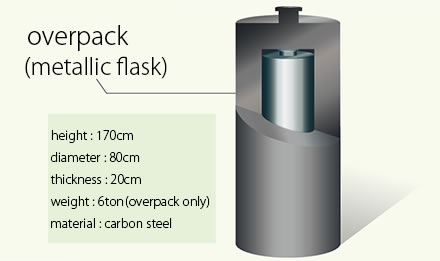What is vitrified waste?
Nuclear waste can recycle. One of useful things is collected. High-level nuclear waste is become vitrified waste and fill in 300 meters deeper stratum. Vitrified waste is cooled and harden in the canister to change high-level radioactive waste produce in case of reprocessing nuclear spent fuel into the strong condition. This vitrified waste is also called high-level nuclear waste. Why are glasses used? Because glasses can shut radioactive materials as the safe condition for a long time. Glasses is the stable and insoluble material as it is used test tubes or beakers. That's why they are useful in terms of saving nuclear waste for a long time.
Source : https://www.numo.or.jp/q_and_a/faq/faq100021.html
Structure
Multiple barrier=engineered barrier +natural barrier
《Engineered barrier》
1, Vitrified waste (diameter 40cm, height 1.3m, total mass 500kg) =solidification glass (high-level nuclear waste) +canister (the container made of stainless)
2, Put into overpack (thickness=19cm) →the container made of steel
3, Surrround by buffer (about 70cm clay)→Buffer materials (bentonite) is hygroscopic and has swelling capacity. In addition to, it has low hydraulic permeability. Surface of the bentonite has negative charge and capture cations. The buffer material is emplaced between overpack and surrounding rock. This situation prevents water from going through because buffer materials will absorb water and become low permeable.
《Natural barrier》
4, Fill in the stratum→ make radioactive materials less mobile
Groundwater can’t move easily in bedrock. Furthermore radioactive materials move even more slowly in bedrock.



.jpg)